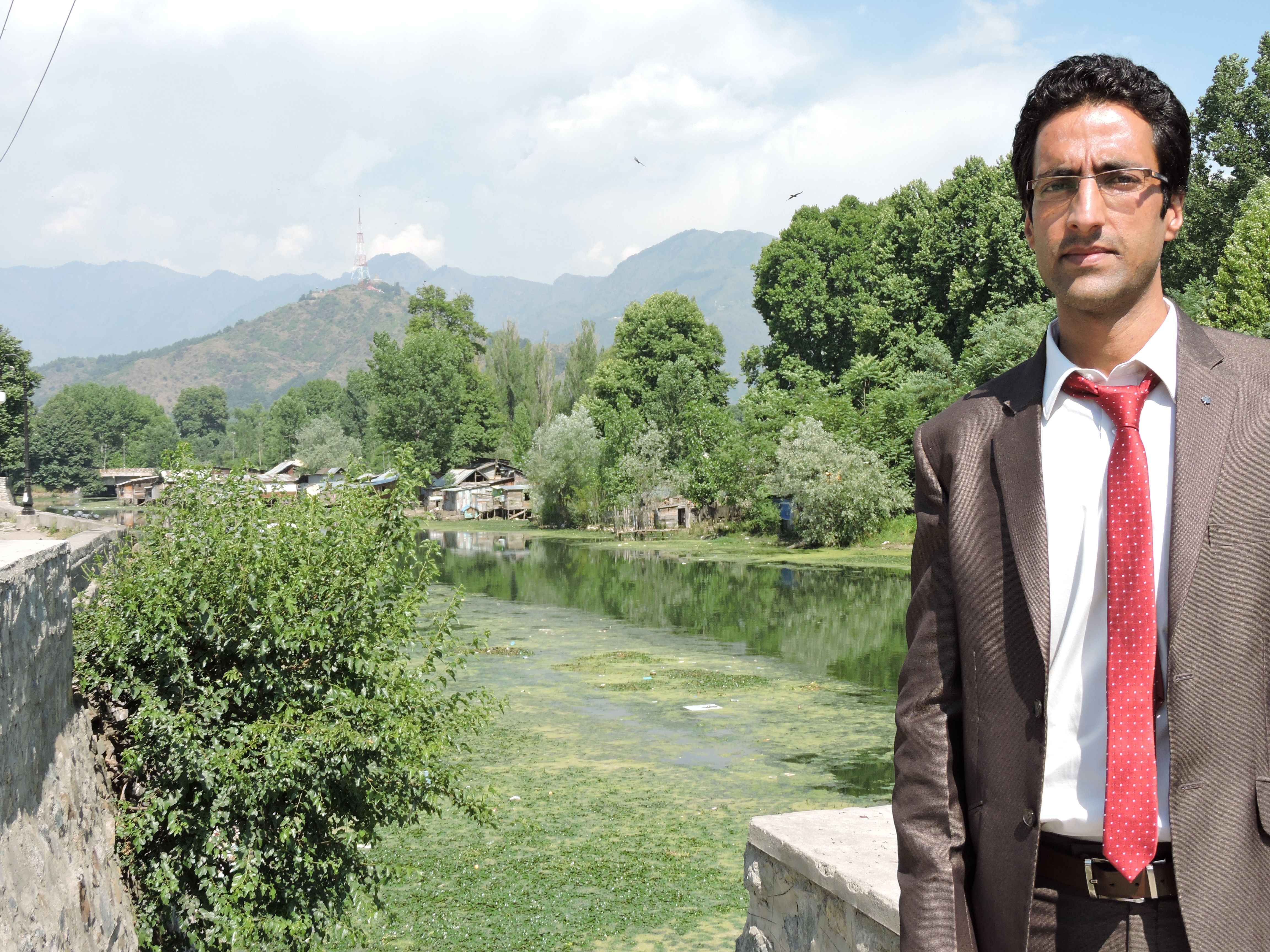“Nobody is bothering,” said Kashmiri environmentalist Dr. Abdul Majeed Kak, 67, as he sips tea in his office at the Islamia College of Science and Commerce in Srinagar.
Environmental enthusiasts, such as Kak, who study Kashmir’s ever-dwindling water bodies, constantly face a lack of support from government authorities to fund projects that could save the state’s revered natural attractions.
Wular Lake is one of the shrinking hydrological systems that have placed extra stress on the communities living around it.
“You can see litter everywhere. Shocking, it’s really shocking,” said Dr. Ather Masoodi, a young aquatic biologist from Kashmir who has studied invasive weeds in Wular for five years. He says this from within the middle of the lake where cattle carcasses and plastic household items emerge from the surrounding shallow waters.
Compassion for these communities and Kashmiri pride drive ecologists, hydrologists, and lawyers alike to educate foreigners and locals on the impending instability facing the aquatic environments.
In 2007, Wetlands International South Asia brought together environmental scholars from Kashmir to write the Comprehensive Management Action Plan for Wular due to its diminishing water quality and reduction in size. The lake is a site of extreme importance for biodiversity and avian migration as well as a support system for over 10,000 households.
Yet the sloth-like pace of conservation efforts, which only began in 2011, has scholars questioning the true motives of the authorities.
“None of the authorities who support the lake actually come down to the lake. No one supports you. It’s a real challenge." Masoodi said.
Not only do untreated sewage and chemical pollutants in the lakes and rivers create stress, but so do invasive weeds as they establish colonies within Kashmir’s water systems.
Masoodi focuses on one particularly noxious weed called Alternanthera philoxeroides, more commonly known as alligator weed. Alligator weed was first noted in Wular Lake only five years ago, but it is rapidly spreading.
As a floating weed it is easy for boats to accidentally brush past and break off bits of the plant. A broken fragment of the plant can regenerate elsewhere on the lake and form the beginnings of another patch.
“If we delay the management of the weed, say five years down the line, then it will be impossible to eradicate and the cost will go up exponentially,” said Dr. Masoodi.
Masoodi has requested conversations with the chief minister of Kashmir and heads of the water authorities, but to little avail.
Although more than 380 crore rupees ($60 million) has been allocated to the management of Wular, large conservation efforts are nowhere to be seen. In early June 2014, the Jammu and Kashmir High Court commissioned a report from the Wular Conservation and Management Agency after an NGO in Kashmir reported that funds were mismanaged.
“Policy is being made in the four walls of the secretariat, but policy cannot be made this way,” said Nadeem Qadri, an environmental lawyer in Srinagar.
As the president of his own environmental NGO, Qadri criticizes the government corruption. The taxpayers should know how their money is being spent, he says, but the authorities are rarely questioned.
Kak stresses the importance of public awareness about the various plant species that threaten the lake’s existence.
“I publish as many articles as I can in the local papers because it is the general public who needs to know how to recognize the weed, not just the scholarly community,” he said.
Both Kak and Masoodi want to get the local populations involved in management of the weeds and the lakes to provide a steady income—and to quell further damage to the once pristine water bodies in Kashmir.
“I am trying to convince the local authorities that if there is a small patch (of alligator weed), we can bring the local men with their boats and pay them to take it out and dump it safely,” Masoodi said. “But we have to start now.”





